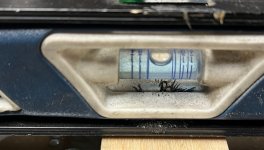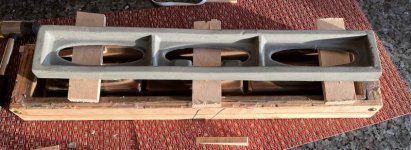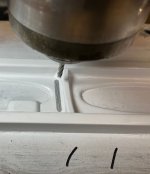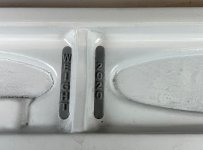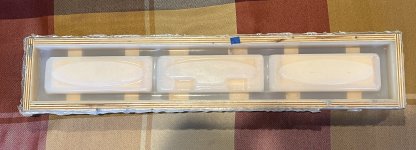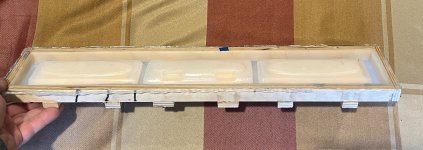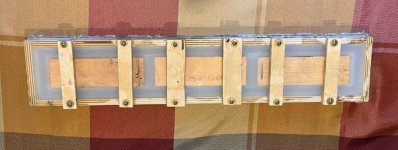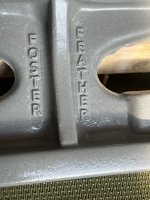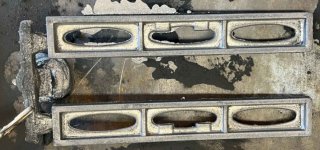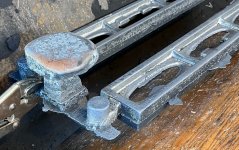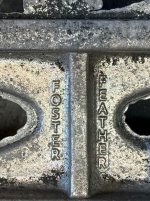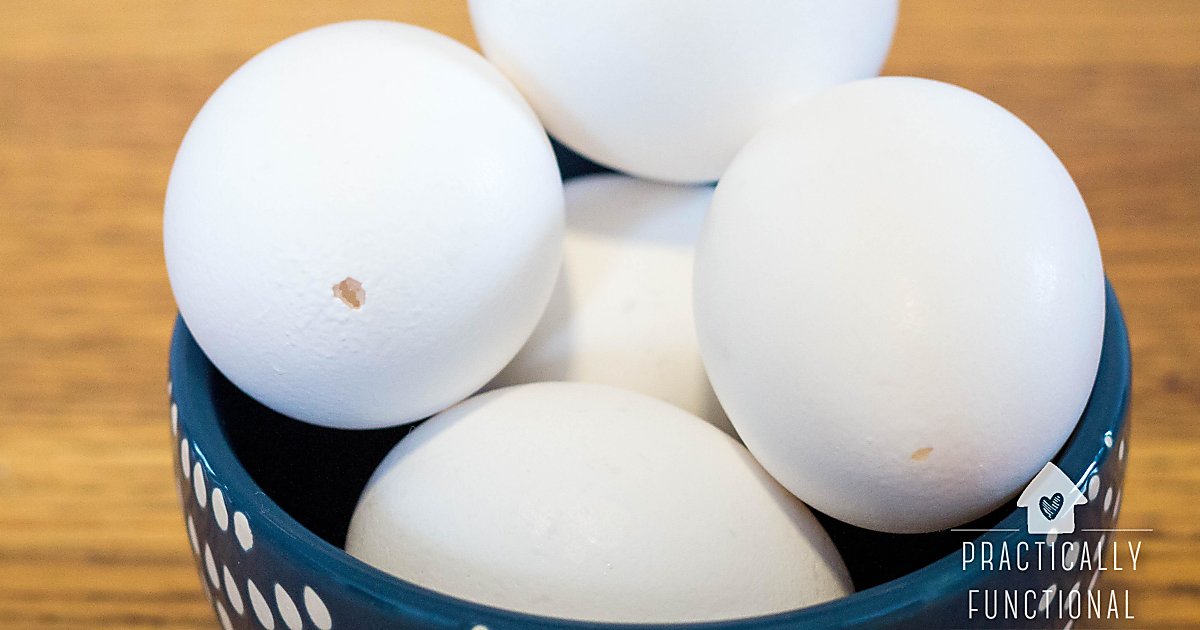dgfoster
Diamond
- Joined
- Jun 14, 2008
- Location
- Bellingham, WA
After getting a faithful copy of the original pattern (this purpose-made urethane shrinks less than 1% and captures detail to very fine resolution), I poured two-part rigid urethane into the mold.
I leveled the mold and poured the urethane.

The cross pieces of plywood have drywall screws in them with the heads embedded in the urethane. They will help extract the plastic pattern after the urethane sets. Even with the wax, PVA, and silicone the rigid urethane still adheres to the mold. Shims were used to level the mold. Spacers under the cross pieces allow wedge insertion to pry urethane loose from the mold.



The final result. This rigid pattern will require only a little touch-up before attaching to the working match plate.

I am having some custom letters made to attach to the other pattern half. Those will not be ready til later this week.
Denis
I leveled the mold and poured the urethane.
The cross pieces of plywood have drywall screws in them with the heads embedded in the urethane. They will help extract the plastic pattern after the urethane sets. Even with the wax, PVA, and silicone the rigid urethane still adheres to the mold. Shims were used to level the mold. Spacers under the cross pieces allow wedge insertion to pry urethane loose from the mold.
The final result. This rigid pattern will require only a little touch-up before attaching to the working match plate.
I am having some custom letters made to attach to the other pattern half. Those will not be ready til later this week.
Denis



